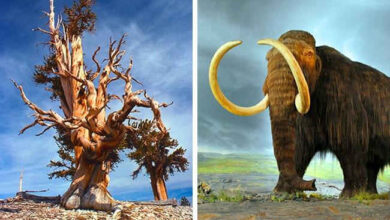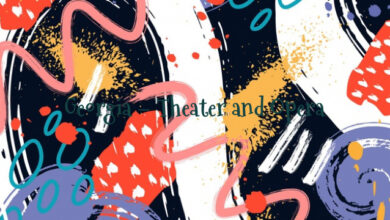
Ancient Georgia
In the fourth century BCE, Georgian principalities found themselves involved in the whirlwind of Alexander the Great’s campaign in the east. There is no historical evidence that Alexander or his generals campaigned in the Caucasus, but Georgian chronicles describe ‘Greek’ troops reaching Iberia/Kartli, which they occupied and placed under the governorship of Azo (Azon). Greek authorities proved to be harsh and uncompromising which caused the local population to rebel. According to Georgian historical tradition, young Parnavaz, a nephew of the last ruler of Iberia who was assassinated by the Greeks, contacted Eristavi Quji of Egrisi and, with his support, launched a successful rebellion against Azo. Parnavaz, who married the daughter of Quji, thus controlled both the eastern and western Georgian principalities. He founded the Parnavazid dynasty and divided the kingdom into seven regions under governorship of eristavis and established Shida Kartli as a special region ruled by a spaspet. Despite the lack of tangible proof, King Parnavaz is often credited with the spreading of the Georgian alphabet throughout the kingdom and introducing the cult of Armazi and the goddess of fertility Zadeni. Archaeological evidence revealed the Iberian capital of Mtskheta as an advanced city with its own acropolis, baths and other amenities.
Under later Parnavazid kings, the kingdoms of Iberia and Colchis/Egrisis found themselves facing major change in the balance of power in Asia Minor. In 190 BCE, the Seleucid Empire fell to the Romans while the weakened Persia was unable to prevent the rise of the powerful Armenian kingdom under Artashes (Artaxias). Armenian rulers greatly expanded their territory that also incorporated some Georgian regions. After the death of King Parnajom of Iberia, the Armenian king Arshak took over his throne, establishing an Armenian hegemony over eastern Georgia. In the first century, Armenia reached its zenith under King Tigran II the Great, who allied himself to his father-in-law Mithradates Eupator of Pontus (111-63 BCE) against Rome. Western Georgians were also allied with Pontus, where Georgian tribes (Laz/Chan, Colchians, Chalybes, etc) constituted a large part of the population and served in the armies of King Mithradates in Greece and Asia Minor. In 65 BCE, the Roman General Gnaeus Pompeius Magnus defeated Pontus and marched against Iberia, where King Artag was forced to recognize Roman sovereignty, sending lavish gifts of gold and his children as hostages. Meanwhile, Pompeius crossed the mountains into Colchis, where he campaigned in search of the mythical Golden Fleece and chained titan Prometheus. Thus, Colchis-Egrisi and Kartli-Iberia were recognized as client states of Rome. The wealth and might of these principalities were attested by famous Greek scholar Strabo, who described eastern and western Georgian lands in his Geography.
Roman power was never firm in eastern Georgia, which remained under the Persian sphere of influence for the greater part of its existence. In 37-36 BCE, Iberians refused to participate in Emperor Marc Antony’s campaigns against Parthia and a large anti-Roman rebellion began in 36. The punitive expedition of Publius Canidus Crassus was the last Roman effort to conquer eastern Georgia. However, the western Georgian principality of Colchis/Egrisi remained under direct Roman administration and struggled for its independence. In 69 CE, a powerful insurrection, led by a former slave Anicetus, succeeded in temporarily driving the Romans out of Colchis but was later defeated. By the second century, several principalities (Lazica, Abasgia, etc.) emerged in western Georgia and recognized the sovereignty of Rome.
In the first-second centuries CE, the Kingdom of Kartli (Iberia) emerged as a relatively strong state as its rulers took advantage of the struggle between Rome and Parthia. King Parsman (Pharasmenes) actively interfered in the affairs of the neighboring Armenian kingdom, placing his brother Mithradates (35-51 CE) on the Armenian throne in the mid-first century, and skillfully maneuvering between the powerful empires of Rome and Parthia. The Iberian presence in Armenia weakened after the Treaty of Rhandeia of 63 CE between Rome and Parthia allotted the privilege of nomination to the Parthian Arsacids and the right of investiture to the emperor of Rome. The Roman emperors sought to gain the support of the kings of Kartli (Iberia) against the Parthians. Emperor Vespasian (69-79) had a wall erected in Mtskheta with inscription that King Mithridates (Mihrdat) of Kartli (Iberia) was “the friend of the Caesars” and the ruler “of the Roman-loving Iberians.” Another King Parsman (mid-second century) openly defied Rome and refused to pay homage to the Roman Emperor Hadrian (117-138) during the latter’s visit of Roman provinces in Asia Minor, although the Roman emperor presented him with a war elephant and 500 troops. With the help of the Alans, Parsman attacked the Roman and Parthian vassal states in Albania, Armenia and Cappadocia. Under Hadrian’s successor, Emperor Antoninus Pius (138-161), the relations between the Roman Empire and Kartli (Iberia) significantly improved and King Parsman, accompanied by a large retinue, visited Rome where he received a royal welcome; according to the Roman historian Cassius Dio, he was given the special privilege of offering a sacrifice on the Capitol and having his equestrian statue placed in the Temple of Bellona.
The fortunes of Kartli changed with the rise of the Sassanid kingdom in Persia in the third century CE, when the Iberian kings were forced to recognize the Sasanid supremacy; the Sasanid rulers appointed their viceroys (pitiaxæ/vitaxae) to keep watch on Georgian lands. The office of pitiaxæ eventually became hereditary in the ruling house of Lower Kartli, thus inaugurating the Kartli pitiaxæat, which brought an extensive territory under Sasanid control. In the third century, the Roman Empire briefly regained Kartli under Emperor Aurelian (270-275) but lost it a decade later. The Persians placed their candidate Mirian (Meribanes, 284-361) on the throne of eastern Georgia. Mirian’s reign proved decisive since he became the first Georgian ruler to adopt Christianity.
The rise and spread of Christianity, which continued for several centuries, had a profound effect on the Georgian principalities. Georgian tradition holds that two members of the Jewish community of Mtskheta were present at the crucifixion of Jesus Christ and brought back a number of holy relics, including Christ’s chiton that was buried near Mtskheta. The Christian tradition also claims the allotment of the “Iberian” lands to Virgin Mary, who is, thus, considered the main protector and intercessor of Georgia. Georgian Orthodox Church credits the introduction of Christianity to Apostles Andrew the First Called, Simon the Canaanite, Mathias, Bartholomew and Thaddeus, who preached in western and southwestern Georgia in the first century.
The Sasanid Empire and its Zoroastrian religion had a firm hold in eastern Georgia and delayed the spread of Christianity for another three centuries. In the early fourth century, Saint Nino of Cappadocia preached the Christian message in Iberia and succeeded in persuading King Mirian and his consort, Queen Nana, to proclaim it a state religion in Eastern Georgia around 337; although technically marking the start of conversion only in Iberia, this event is now considered as the official conversion of all of Georgia. However, Christianity was already well established in western Georgia and Bishop Stratophilus of Bichvinta had attended the first Ecumenical Council held in Nicea in 325. Sixty years later, western Georgian bishops were joined by Bishop Pantophilus of Kartli at the second Ecumenical Council in Constantinople in 381. The Georgian Orthodox Church was initially under the jurisdiction of the Apostolic See of Antioch, but became autocephalous (independent) in 466 when the Bishop of Mtskheta was elevated to the rank of Catholicos of Kartli. Another important development took place in the sixth century, when Georgian church leaders rejected Monophysitism (Armenia accepted it in 506 and the split with the Georgian church was complete by 607) and supported the Chalcedonian creed, drawing Georgia closer to the Byzantine Empire, and later to the Christian Europe, and further from SasanianPersia, that was more tolerant of the Monophysites.
Conversion to Christianity had long-lasting consequences for Georgia. Situated at the crossroads of the West and the East, Georgia now took political orientation towards the West/Europe and firmly tied its future and culture to Western civilization. The introduction of Christianity stimulated a vigorous development of arts and letters. Although pre-Christian Georgian literature seems to have been destroyed in the process, Georgia underwent a cultural transformation. Monasticism flourished and many important religious works were translated into Georgian. One of the earliest surviving examples of Georgian original hagiographic literature re the fifth century Martyrdom of the Holy Queen Shushanik and Life of Saint Nino. The widespread construction of churches promoted rapid improvement in architecture and gradually a unique cruciform style of church architecture was developed, evident in the basilica-type churches of Bolnisi and Urbnisi (fifth century) and the cruciform domed Jvari Church (late sixth century).
Christianity in Georgia was put to severe tests from the very beginning. Sasanian Persia promoted the teachings of Zoroaster and helped spread Mazdaism throughout eastern Georgia. Shah Yazdegerd II (438-457), convinced that a single religion would enhance the unity of his empire, endeavored to convert Georgians to Mazdaism and dispatched Zoroastrian magi to Kartli to take charge of the conversion. Many Georgian nobles submitted, but their commitment to the new faith proved shallow. Efforts to convert the common people were less successful since Christianity appeared to have struck deep roots among them.
In the fifth-sixth centuries, Christian Kartli (Iberia) struggled against Persian domination. This period produced King Vakhtang Gorgasali (452-502), one of the most colorful personalities in the history of Georgia. The son of King Mihrdat V, he was nicknamed Gorgasali (“wolf headed,” from the Persian Gorg-a-sar) because of the shape of his helmet. Married to a Persian princess, he extended his authority to the Byzantium-held Egrisi (Lazica) and Abasgia, subdued the warlike tribes of Alans (Oss, Ossetes) and secured the autocephalous status for the Georgian Orthodox Church. Married to an Iranian princess, Vakhtang participated in the Persian campaigns against the Byzantine Empire between 455 and 458 but later grew irritated with the Persian interference in his affairs. In 482, he, in alliance with the Armenians, led an uprising against Persia, but internal dissension and the failure to secure help from Byzantine Emperor Justinian doomed the rebellion; Georgia was ravaged by the Persian punitive expeditions in 483 and 484. In 502, Vakhtang led another uprising that proved to be more successful. The Georgians defeated Shah Kavad’s army on the Samgori Plains in Kartli, but King Vakhtang himself was mortally injured when one of his renegade servants betrayed him and wounded him through an armpit defect of his armor. One of his lasting legacies was the transferring of the capital from Mtskheta to the nearby small fortress of Tbilisi.
The death of King Vakhtang seriously weakened Kartli (Iberia) and exposed it to Persian encroachment. In 523, King Gurgen rose in rebellion but was defeated; Kartli was occupied and the Iberian monarchy was later abolished. Persian officials introduced heavy taxation and Mazdaizing policies. Having subdued Kartli, Persia moved into Western Georgia, where it clashed with the Byzantine Empire. In the mid-520s, King Tsate of Lazica broke his alliance with Persia and supported the Byzantine rulers, who deployed their forces at Tskhisdziri (Petra). The rulers of Egrisi/Lazica tried to use the hostility between Byzantium and Persia to their own advantage, but the war devastated western Georgia. Persia invaded Lazica several times but the alliance between the rulers of Lazica and Constantinople endured. However, in 554, King Gubaz of Egrisi was assassinated by Byzantine officials on the Khobistskali River. In response, the dismayed population of Egrisi summoned a national assembly, where two notables, Aietes and Phartazes, gave their famed speeches on whether to continue supporting Byzantium or turn to Persia. In the end, Egrisi sided with the Byzantine Empire, feeling cultural and religious affinity with it. By 562, the joint efforts of Egrisi and Byzantium culminated in the expulsion of Persia from western Georgia. Lazica became a province of the Byzantine Empire.
The Byzantine-Persian rivalry had serious consequences for Iberia. Sasanid rulers held eastern Georgian under their suzerainty while local princes led by mamasakhlisi (prince-regent) of Kartli/Iberia) ran the government. When the Byzantine Emperor Maurice attacked Persia in 582, Georgian nobles supported him in hopes of restoring the kingdom of Iberia. Iberian autonomy was restored in 588, but Emperor Maurice appointed a curopalates (presiding prince) instead of a king. The first curopalates, Guaram (588-602) and his heirs were caught between the warring Persia and Byzantium. In 591, Constantinople and the Sasanid Empire agreed to divide Iberia between them, with Tbilisi remaining in Persian hands and Mtskheta, the old capital, under Byzantine control. In the early seventh century, the truce between Byzantium and Persia collapsed and Erismtavari Stepanoz I of Iberia (ca. 590-627) succeeded in reuniting the eastern Georgian territories. As the war between the Byzantine and Sasanid empires continued, Georgian principalities were often turned into battlegrounds. In 627-628, the campaigns of Byzantine Emperor Heraclius ensured Byzantine predominance in western Georgia and significantly weakened Iberia/Kartli, exposing it to the arrival of the new conqueror.
Historical Dictionary of Georgia
by Alexander Mikaberidze (Author)
Series: Historical Dictionaries of Europe (Book 50)
Hardcover: 784 pages
Publisher: Scarecrow Press (March 16, 2007)
Language: English
ISBN-13: 978-0810855809
ISBN-10: 0810855801




